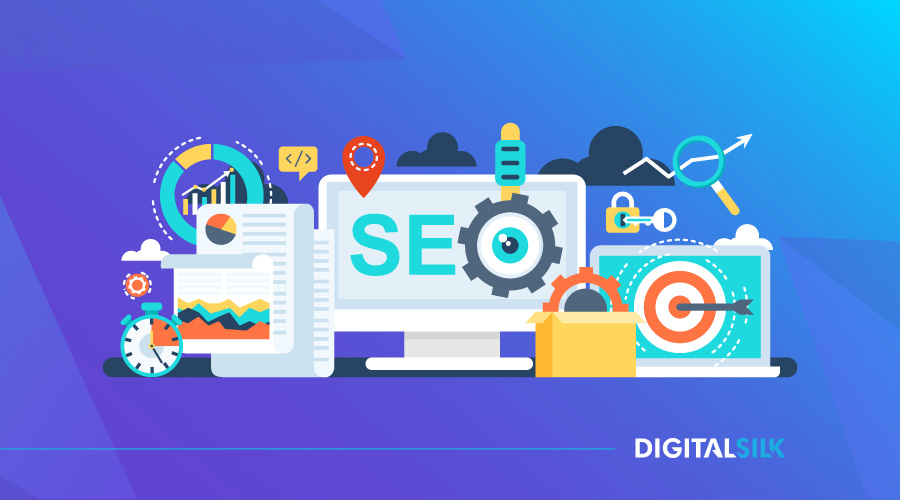
eCommerce is expected to account for 22% of all retail sales by 2023.
As one of the fastest-growing trends right now, many businesses are starting to embrace the idea of offering customers a digital shopping experience to increase revenue.
However, it all starts with learning how to build an eCommerce website.
In this article, we will outline the things to consider, steps to take and best practices to follow when building an eCommerce website for your business.
Table of Contents
Why You Should Invest In An eCommerce Website
Whether you’re an established business or just starting to develop your business idea, you should consider investing in an eCommerce website.
Selling your products or services online has several benefits:
- It’s an incredible revenue stream: U.S. consumers spent $211.5 billion online in the second quarter of 2020 alone. eCommerce is a booming sector, with more and more customers taking their shopping habits online. Developing an eCommerce website for your business will allow you to tap into that revenue stream.
- It’s cost-effective: Depending on the eCommerce platform you choose and the size of your business, an eCommerce website can cost as little as $2,000 to develop and $1,000 per year to maintain. This is significantly more cost-effective than a traditional brick-and-mortar store.
- It’s convenient for you and your customers: Running an eCommerce website can be relatively hassle-free. Many eCommerce platforms offer various degrees of automation that will save you time and resources. Your customers will see the benefits of eCommerce, too, as they will be able to explore and purchase your products in a much faster way.
- It increases your brand awareness: 93% of buyer’s journeys start with a search engine. Featuring your products or services on an eCommerce website will make your products, as well as your band, more visible to your target audience, increasing brand awareness.
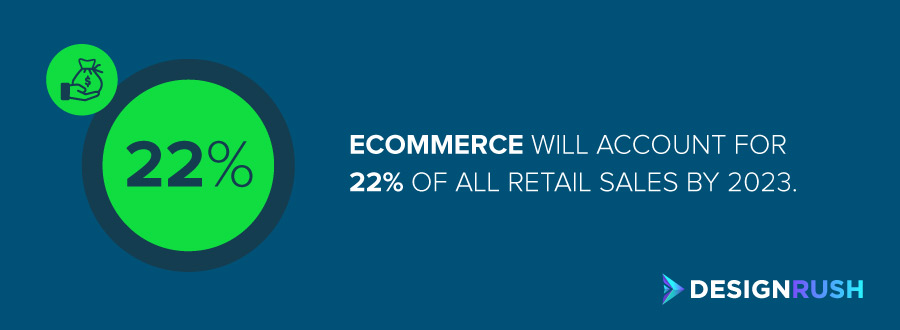
Considerations When Learning How To Build An eCommerce Website
There are several important things to consider before diving into the development of an eCommerce website.
Consideration #1: Your Business Niche, Goals And Objectives
Before developing an eCommerce website for your business, you should determine what your business is all about.
To do that, answer the following questions:
- What is the mission of your business?
- What are its core values?
- What problem do your products or services solve?
- What makes your products or services unique?
- What are the specific goals of your business?
Answering these questions will make it easier for you to determine your target audience, develop your eCommerce sales funnel and choose the platform that best suits your needs.
Consideration #2: Your Ideal Customer Profile
The best way to understand your target audience is to develop an ideal customer profile.
An ideal customer profile is a portrait of a prospective client who will bring the highest value to your business.
This portrait is usually based on two key factors:
- Demographics explain who your ideal customer is. Demographic info includes age, location, income, education and so on.
- Psychographics explain why your ideal customer would choose to buy your products or services. Psychographic factors include the lifestyle, values, hobbies, motivations and inspirations of your customers.
By creating an ideal customer profile you will be able to identify your target audience and tailor your eCommerce website to ensure it attracts the right customers for your business.
Consideration #3: eCommerce Sales Funnel
The eCommerce sales funnel is a visual and theoretical representation of the path your customers take to purchase your product or service.
Also known as the eCommerce conversion funnel, it includes the following steps of the buyer’s journey:
- Discovery is the first stage of the funnel where your customers first become aware of your products or services. At this stage, it is important that you explain the mission of your business and the benefits of your products to your prospective buyers.
- Interest is a stage that sits in the middle of the eCommerce sales funnel. It is populated by users who have already discovered your eCommerce website and are actively browsing through your offerings. Your goal at this stage should be to get your visitors to add your products to their wishlist or shopping cart.
- Decision is a bottom-of-the-funnel stage where your visitors are making up their minds about purchasing your product. Your priority at this stage is to make the purchasing process as easy as possible to avoid shopping cart abandonment.
- Retention is the final stage of the eCommerce sales funnel and it repeats. A loyal client can be up to 10 times more valuable than their first purchase, so retaining your customers should be an important consideration for you.
The goal is to design your eCommerce website in a way that will prompt your visitors to progress through each stage of the sales funnel.
This way, you will ensure that you maximize the revenue potential of your target audience.
Consideration #4: Logistics Of Your eCommerce Business
Logistics plays an important role in ensuring that your eCommerce business reaches its goals and delivers on its mission.
Logistics include the following things:
- Payment gateway: Your eCommerce website should offer your customers several different payment methods, such as credit and debit cards, online wallets or wire transfers.
- Shipping: Your customers should have a clear understanding of how and when they will receive their orders. This is why you should pick a reliable shipping partner and integrate features like shipment tracking.
- Security: Above all, think about eCommerce security. Your clients should feel at ease when entering their personal info and banking details into your system. The easiest way to secure your site is to install a Secured Security Layer (SSL) certificate on your website.
Consideration #5: eCommerce Marketing and eCommerce SEO
After you launch your eCommerce website, promoting it can help get the word out about your business.
Ideally, you should implement a combination of the following eCommerce marketing strategies:
- SEO: Optimizing your website to rank on the first page of Google is a sure way to generate brand awareness, traffic and customers. eCommerce SEO is a vast field and includes many techniques that improve your search engine ranking, such as SEO-optimized content, on- and off-page SEO optimization and link-building.
- Social media marketing: Social media is a great tool for increasing the visibility of your brand and it can also help you take your eCommerce efforts further. Social media platforms, such as Facebook and Instagram, now have an in-built eShop functionality. Featuring your products there in combination with clever promotion will surely boost your sales.
- Email marketing: As one of the most cost-effective marketing tools, email marketing is a great way of remarketing your products to customers at later stages of the conversion funnel. Using an email marketing automation tool, such as MailChimp, will help you reduce your email marketing costs even further.
What Are The Most Common eCommerce Platforms?
Developing an eCommerce website from scratch can be a length, costly process.
Luckily, there are several platforms that can help you create a stunning eShop with little investment.
Platform #1: WooCommerce
WooCommerce is the most popular eCommerce platform, boasting a 29.09% market share.
Its popularity is largely due to the fact that it’s not exactly a standalone eCommerce platform — it’s a WordPress plugin.
Because of that, it shares many similarities with WordPress that make it the top choice for many WordPress-based eCommerce websites, including:
- Fantastic customization potential: There are over 1,000 themes available for Woocommerce, which makes customizing your eShop relatively easy.
- Intuitive to use: Getting started with Woocommerce doesn’t require any special skills or knowledge, apart from a basic understanding of WordPress.
- Affordable: One of the biggest advantages of Woocommerce is the fact that it’s free to install. You will have to pay for additional extensions and plugins but you can still create a basic eCommerce website with minimal investments.
Woocommerce is a great solution for smaller eCommerce businesses that prioritize customization and ease of use over complex functionality.
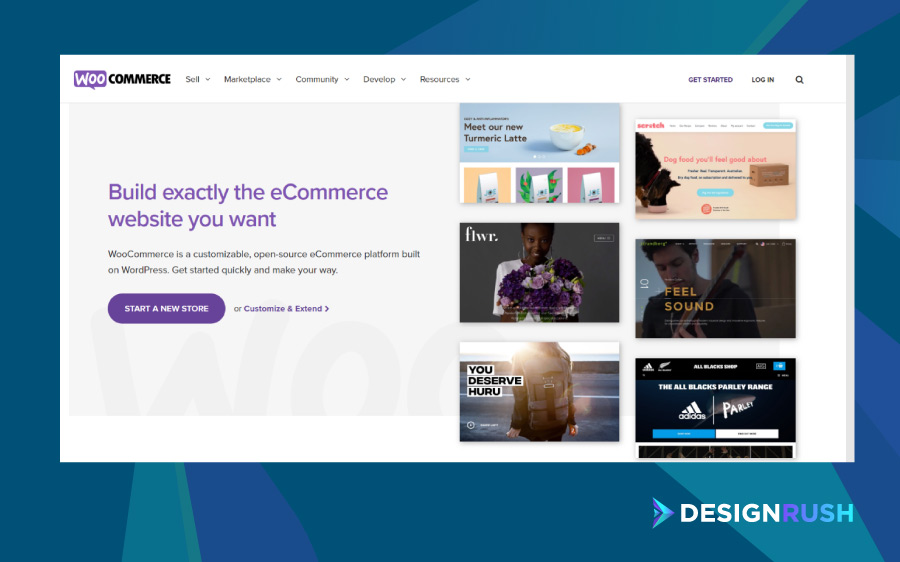
Platform #2: Magento
Magento is another popular open-source eCommerce platform. It’s a more complex, feature-rich solution than Woocommerce and it requires more development skills.
With over 3,000 available extensions, it is the platform of choice for larger, established eCommerce businesses that have the resources to develop it according to their needs.
The key benefits of Magento include:
- Plentiful features: Magento’s plentiful feature offerings make it possible to tailor the functionality of your eCommerce website to the goals of your business.
- Security: Magento is one of the most advanced eCommerce platforms when it comes to security features and updates. If eCommerce security is a big priority for you, Magento is the way to go.
- Advanced analytics: Magento offers one of the most advanced analytics packages across eCommerce platforms with built-in tools for measuring shopping cart abandonment rate, conversion funnel stats and more.
Magento is a sophisticated platform that requires advanced eCommerce development skills to set up. If you have these skills or the resources to hire a Magento developer, you can turn it into a powerful solution for your eCommerce business.
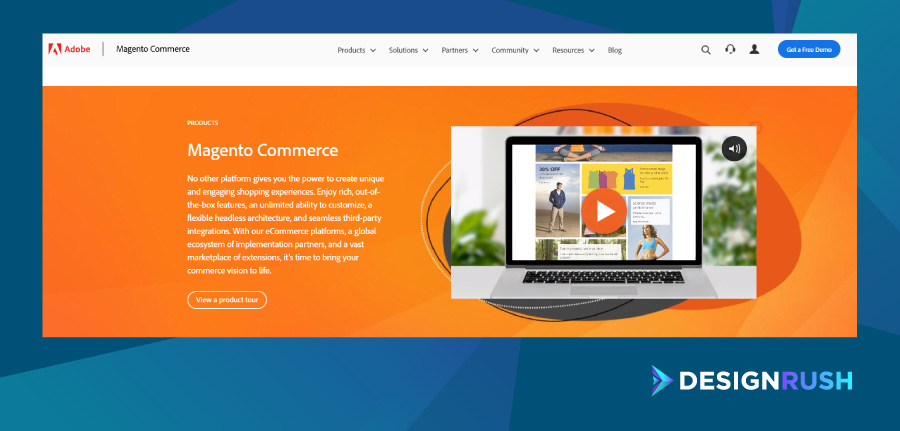
Platform #3: Shopify
Shopify is one of the most well-known eCommerce platforms today and it’s growing rapidly.
On average, the number of Shopify Plus merchants is growing by 126% every year.
Shopify is a straightforward platform to set up, even without any coding knowledge, which makes it great for eCommerce beginners who are looking for a more plug-and-play solution.
Here are a few reasons why Shopify might be the best eCommerce platform for you:
- Flexibility: Shopify offers great flexibility in terms of setting up and managing your eStore. Those without any development knowledge can rely on its drag-and-drop interface, while the more advanced users can easily customize the code.
- Several subscription plans: Shopify is entirely subscription-based with several plans that fit different budgets, from $9 per month for the most basic Shopify Lite to $2,000 per month for the enterprise Shopify Plus.
- Great customer support: Shopify features 24/7 customer support via email, phone or online chat to all users, regardless of the pricing plan they choose.
Shopify is a flexible platform that suits businesses of all sizes, which explains its popularity.
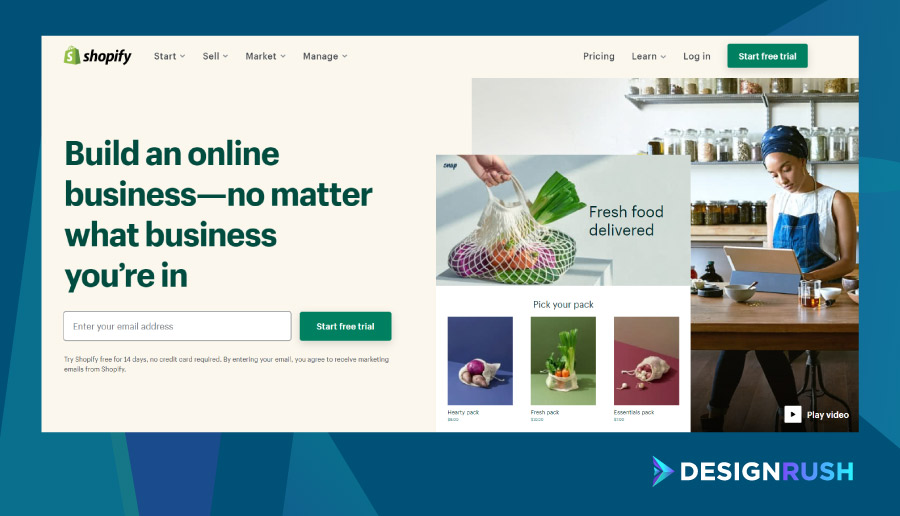
5 Key Steps For Building An eCommerce Website
Building an eCommerce website is a lengthy process with many things to consider, but it can be broken down into five key steps:
Step #1: Create A Domain
Building a website starts with creating a domain.
Your domain name should be short, unique and instantly recognizable. A great domain name will contain the name of your business and communicate what your business is about to prospective customers.
You can either create, register and host your domain from scratch or purchase an existing one if it fits your eCommerce business.
Step #2: Choose An eCommerce Platform
After you’ve created the domain for your website, you should settle on the eCommerce platform your website will run on.
You have two options when it comes to eCommerce platforms:
- Hosted eCommerce platforms are the ones that provide hosting and website maintenance as part of the subscription, such as Shopify. They are easy to set up, require little technical knowledge to run and are generally cheaper.
- Self-hosted eCommerce platforms, such as Magento, Woocommerce or completely custom solutions, are more sophisticated and require web development skills. They are costly to develop but they allow you to fully customize your eCommerce website.
Step #3: Hire An eCommerce Developer
If you’re not sure whether you’ll be able to create your eCommerce website by yourself, you should hire an eCommerce developer.
While some eCommerce platforms are more user-friendly than others, they can still require some additional coding.
Hiring an eCommerce developer means additional costs for you, but in return, you get a professional who will be managing your website and resolving potential issues.
Step #4: Build Your eCommerce Website
This is the step where your eCommerce website comes together.
During this stage, you will design the visual and functional architecture of your eStore.
This will involve settling on a visual theme for your website, creating custom design elements, writing web copy and choosing what functionality to include.
Before hitting the launch button, however, make sure to test your website to see whether it works properly and looks just like you imagined it.
Step #5: Promote Your eCommerce Website
Congratulations, your eCommerce website is now live!
However, the work doesn’t end here. At this stage, you should start investing in promoting your eCommerce website.
In addition to the eCommerce marketing strategies we’ve outlined above, you should consider employing other marketing tools, such as influencer marketing, PPC advertising or video marketing.
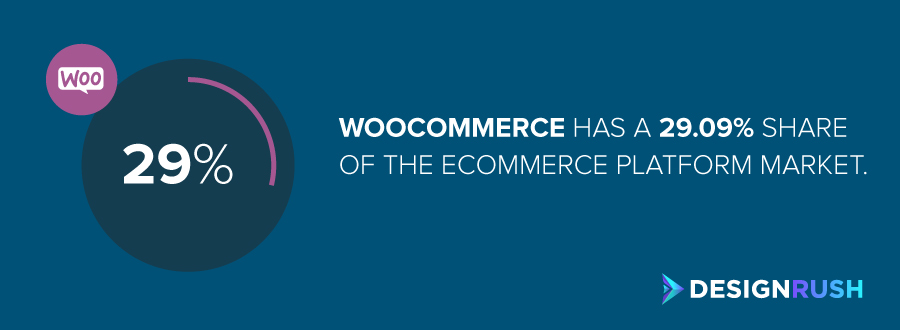
eCommerce Website Building Best Practices
Creating an eCommerce website can be a long and intricate process, but keeping a few best practices in mind can help you stay on track for success.
Follow these best practices to help generate revenue and ensure an optimal user experience:
Best Practice #1: Optimize Your Website For UX
88% of users won’t return to your website after a bad experience. (UXcam)
Optimizing the User Experience of your visitors is as important in eCommerce as in any other industry.
Make sure to design your website in a way that will give your visitors an effortless and pleasant experience.
Some of the key eCommerce UX best practices include minimalistic navigation, a straightforward checkout process and a wishlist function.
Best Practice #2: Optimize Your Website For Mobile
51% of customers make purchases on their smartphones. (Pew Research)
Optimizing your eCommerce website to be responsive and perform well on mobile devices is vital to the growth of your business.
Your prospective and current customers should have the same experience with your website on a smartphone as they would on a laptop.
Best Practice #3: Run A Blog
Brands that run a blog generate 67% more leads per month. (Demand Metric)
Don’t underestimate the power of content marketing.
Running a blog with insights about the industry of your eCommerce business, real-life stories and featured pieces will help you in your SEO efforts and help you engage your users.

Takeaways On How To Build An eCommerce Website
eCommerce is a booming industry with more and more companies choosing to sell their products or services online.
An eCommerce website is a cost-effective way of boosting your revenue and brand awareness and creating a more streamlined buyer’s journey for your customers.
Before developing an eCommerce website, be sure to answer the following questions:
- What are the goals and objectives of your business?
- What is your ideal customer profile?
- What will be the conversion funnel of your eCommerce website?
- How will you handle the logistics of your business?
- How will you market your eCommerce website?
If you don’t have the resources or the desire to create an eCommerce website from scratch, consider one of these eCommerce platforms:
- Woocommerce
- Magento
- Shopify
The five key steps to creating your eCommerce website are:
- Registering a domain name
- Picking an eCommerce solution that fits your business needs
- Hiring the right agency if you can’t develop the website yourself
- Building and launching your eCommerce website
- Marketing your eCommerce website

